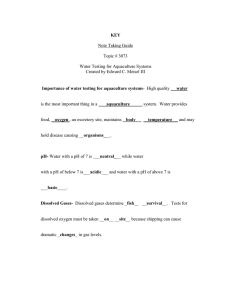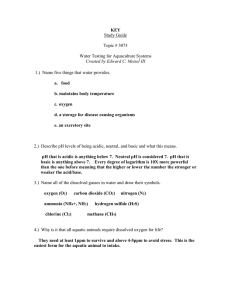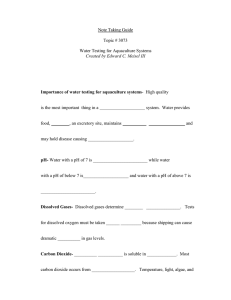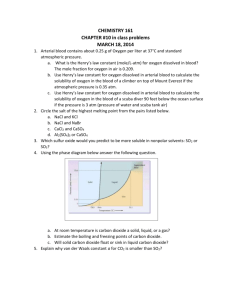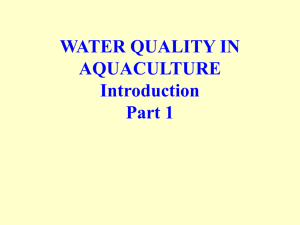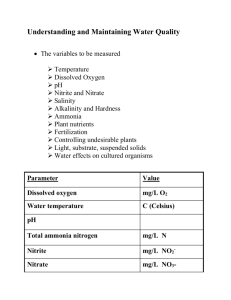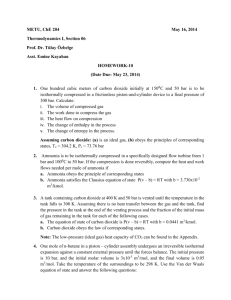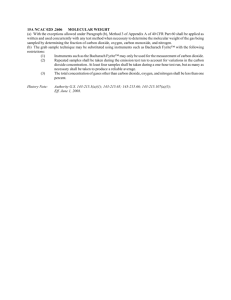Water Testing For Aquaculture Systems
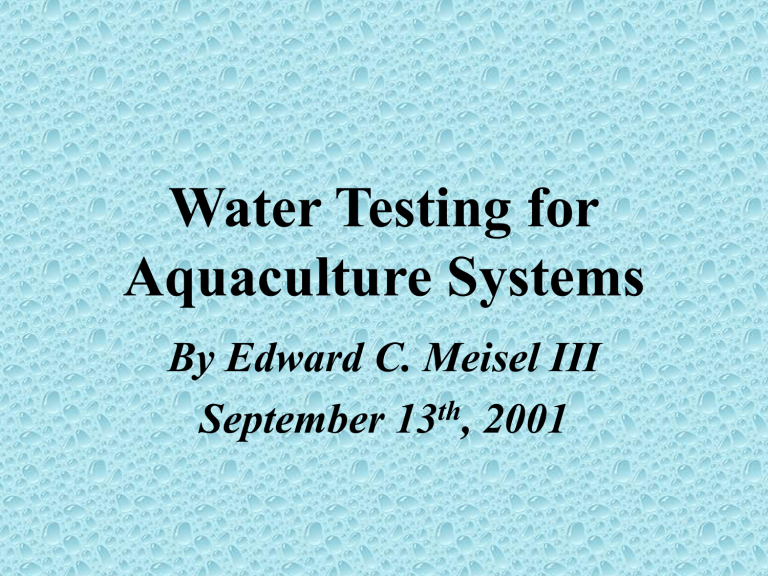
Water Testing for
Aquaculture Systems
By Edward C. Meisel III
September 13 th , 2001
Upon completion of this lesson, the student will be able to:
•
To determine the different ways of testing water quality
•
To learn how and why to test for pH, dissolved oxygen, carbon dioxide, ammonia, nitrite, and hardness
•
To get a basic understanding of how water quality effects fish
Importance of Water Testing
Aquaculture Systems
•
A high quality water is the most important thing in a aquaculture system.
•
Water Provides:
– Food
–
Oxygen
– An excretory site
–
Maintenance of body temperature
–
Possible holding of of disease causing organisms
Water pH
• pH tests are the most common water test
• pH is a measure of the hydrogen ions in water
• pH scale is from 0 to
14, with 7 being neutral
• pH levels above 7 is basic and below 7 is acidic
•
Most fish will die or mutate when pH levels go below 4 and above 11 on the scale
Dissolved Gases in Water
Oxygen Carbon
Dioxide
CO2
Nitrogen Ammonia
O2
Hydrogen Chlorine sulfide
H2S
Cl2
N2
Methane
CH4
NH4+
NH3
*Must all be tested on site
Dissolved Oxygen in Water
•
All aquatic animals require dissolved oxygen for life
•
Aquatic species need at least 4 to 5 ppm to avoid stress
•
Temperature, light algae, and population affect dissolved oxygen levels
Carbon Dioxide in Water
• Carbon dioxide is highly soluble in water
•
Carbon dioxide buildup from respiration can harm the animals when the level is too high
• Most carbon dioxide occurs from respiration
•
Aerating water is the best way to keep oxygen levels up and lowering carbon dioxide
Ammonia in Water
•
Tested with special ammonia test kits
•
Algae use ammonia as a nitrogen source for making proteins
•
The majority of ammonia in water is in the non-toxic ionized form.
•
Can be harmful if levels get too high but most of the time is non-toxic to fish.
Hardness of Water
• Hardness of water is determined by the levels of calcium and magnesium.
• Low or high levels of calcium and magnesium will effect production.
Testing Methods of Water
• There are several tests for water, although two are the most common.
– Colormetric
• Uses a concentration reaction
• Shows test colors
• Can be read on a scale
–
Electronic
• Most aquaculturists use this form of testing
• Electronic device
•
Gives accurate reading for almost all aspects of water
Resources
•
Agriscience and
Natural Resources
Education
Curriculum
•
(3000) Core Area
– Animal Science
• (3070) Unit Title:
–
Aquaculture
•
(3073) Topic
– Water Testing for
Aquaculture Systems
• http://www.msue.ms
u.edu/agriscience/300
0/3070/3073/3073wat ertesting.htm
